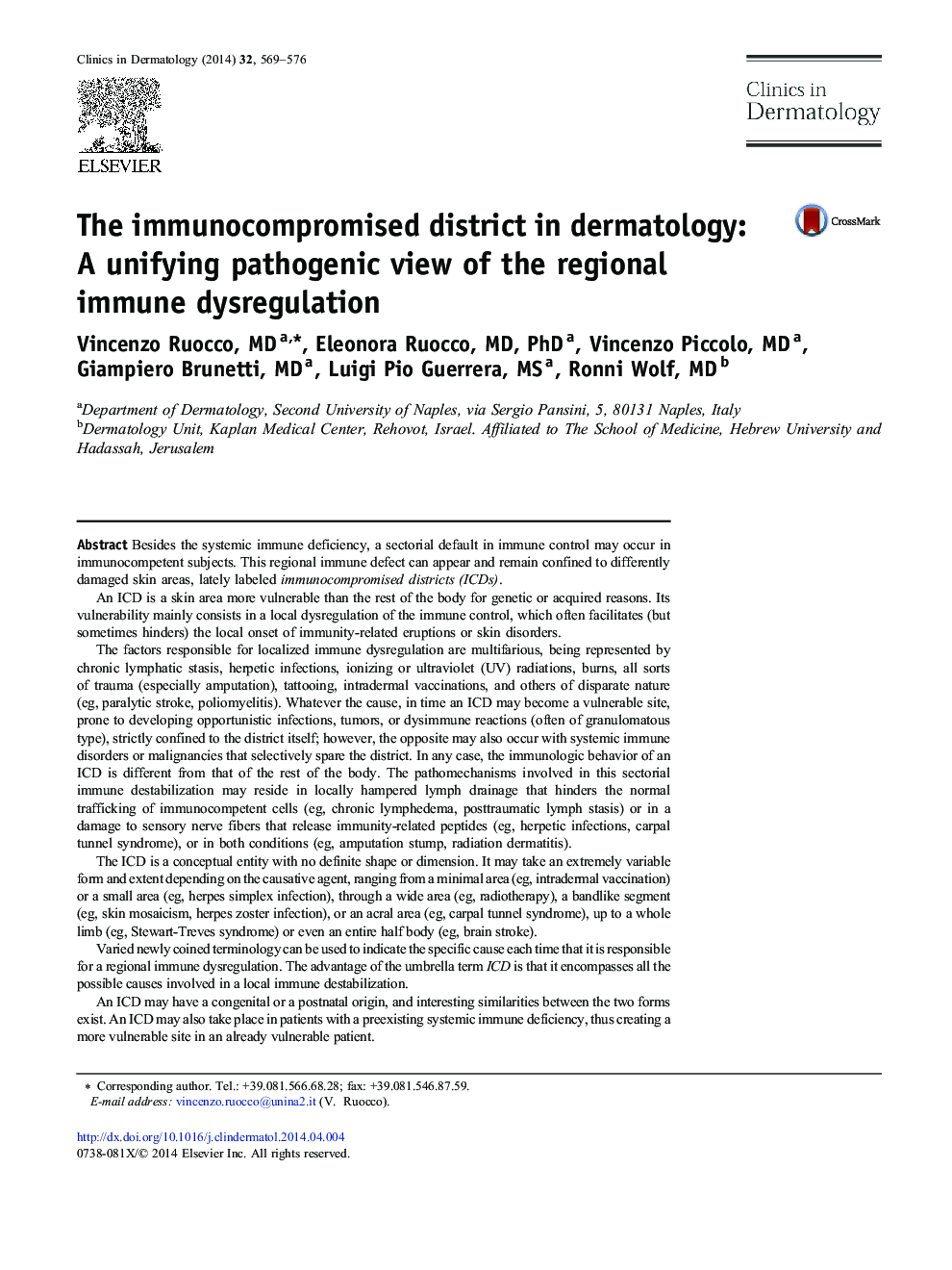| کد مقاله | کد نشریه | سال انتشار | مقاله انگلیسی | نسخه تمام متن |
|---|---|---|---|---|
| 3194135 | 1201378 | 2014 | 8 صفحه PDF | دانلود رایگان |
Besides the systemic immune deficiency, a sectorial default in immune control may occur in immunocompetent subjects. This regional immune defect can appear and remain confined to differently damaged skin areas, lately labeled immunocompromised districts (ICDs).An ICD is a skin area more vulnerable than the rest of the body for genetic or acquired reasons. Its vulnerability mainly consists in a local dysregulation of the immune control, which often facilitates (but sometimes hinders) the local onset of immunity-related eruptions or skin disorders.The factors responsible for localized immune dysregulation are multifarious, being represented by chronic lymphatic stasis, herpetic infections, ionizing or ultraviolet (UV) radiations, burns, all sorts of trauma (especially amputation), tattooing, intradermal vaccinations, and others of disparate nature (eg, paralytic stroke, poliomyelitis). Whatever the cause, in time an ICD may become a vulnerable site, prone to developing opportunistic infections, tumors, or dysimmune reactions (often of granulomatous type), strictly confined to the district itself; however, the opposite may also occur with systemic immune disorders or malignancies that selectively spare the district. In any case, the immunologic behavior of an ICD is different from that of the rest of the body. The pathomechanisms involved in this sectorial immune destabilization may reside in locally hampered lymph drainage that hinders the normal trafficking of immunocompetent cells (eg, chronic lymphedema, posttraumatic lymph stasis) or in a damage to sensory nerve fibers that release immunity-related peptides (eg, herpetic infections, carpal tunnel syndrome), or in both conditions (eg, amputation stump, radiation dermatitis).The ICD is a conceptual entity with no definite shape or dimension. It may take an extremely variable form and extent depending on the causative agent, ranging from a minimal area (eg, intradermal vaccination) or a small area (eg, herpes simplex infection), through a wide area (eg, radiotherapy), a bandlike segment (eg, skin mosaicism, herpes zoster infection), or an acral area (eg, carpal tunnel syndrome), up to a whole limb (eg, Stewart-Treves syndrome) or even an entire half body (eg, brain stroke).Varied newly coined terminology can be used to indicate the specific cause each time that it is responsible for a regional immune dysregulation. The advantage of the umbrella term ICD is that it encompasses all the possible causes involved in a local immune destabilization.An ICD may have a congenital or a postnatal origin, and interesting similarities between the two forms exist. An ICD may also take place in patients with a preexisting systemic immune deficiency, thus creating a more vulnerable site in an already vulnerable patient.Identifying a cutaneous ICD in a given patient is an important standpoint for both diagnostic and prevention purposes. This can be proven by the educative clinical examples that are reported here.
Journal: Clinics in Dermatology - Volume 32, Issue 5, September–October 2014, Pages 569–576
